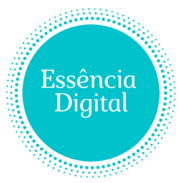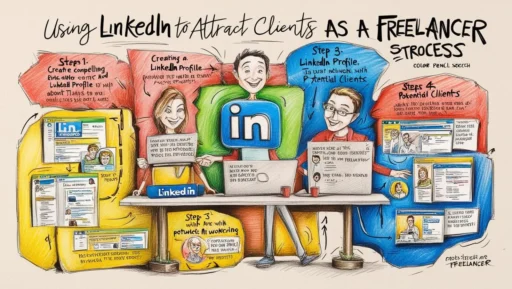Why LinkedIn Is a Goldmine for Freelancers
LinkedIn has transformed from a simple online resume database into the world’s leading platform for professional networking, branding, and opportunity discovery. For freelancers, it offers more than job listings: it’s a living portfolio, search engine, networking event, and credibility-booster all in one. Used strategically, LinkedIn can become your number-one source for quality leads, meaningful connections, and long-term freelance clients—across every industry.
Building a Standout LinkedIn Profile
Start with the essentials, ensuring every section of your profile is complete and compelling:
- Professional headshot: Invest in a high-quality, friendly, approachable photo.
- Headline with impact: Instead of just “Freelancer,” specify your niche and value, e.g., “Content Marketing Freelancer Helping SaaS Startups Grow.”
- About section: Tell your story. Focus less on a traditional career bio and more on how you help clients and the unique edge you offer.
- Featured section: Showcase top work samples, client testimonials, or case studies—upload links, images, or PDFs.
- Experience: List freelance clients and projects, even personal or volunteer work, describing specific outcomes.
- Recommendations: Ask happy clients and collaborators for endorsements; just a few can significantly boost your credibility.
- Skills & endorsements: Select skills aligned with your service offerings and encourage others (peers, clients) to endorse you.
A polished, niche-focused profile builds trust instantly with prospective clients searching LinkedIn for expertise.
Growing Your Network Strategically
- Connect with intention: Start by adding former colleagues, classmates, and industry peers. Every connection expands your “second degree” network.
- Personalize invitations: Reference shared interests, contacts, or past interactions to spark meaningful connections.
- Follow potential clients: Engage with businesses or individuals in your target industry by following their profiles and company pages.
- Join relevant groups: Participate in LinkedIn groups connected to your niche or the freelance economy. Answer questions, offer insights, and network naturally.
Over time, nurture relationships, not just numbers—comment on posts, share thoughtful articles, and respond to milestone updates.
Publishing and Sharing Content for Visibility
- Showcase your expertise: Post articles, infographics, project updates, or behind-the-scenes glimpses of your work.
- Share success stories and client wins: Without violating NDAs, highlight results you’ve helped clients achieve.
- Offer value: Share industry tips, trends, or resources—demonstrate thought leadership in your niche.
- Video and multimedia: Experiment with short videos (demos, Q&As), carousel posts, or even LinkedIn Stories to grab attention.
Consistency matters more than volume. Regular, insightful content draws prospects to your profile, even if they’ve never met you before.
Optimizing Your Profile for Search
Many clients use LinkedIn’s search to find freelancers. To appear in results:
- Use relevant keywords in your headline, summary, experience, and skills sections.
- Include industry terms that reflect what clients are likely to search.
- Stay up to date: Update your profile as your skills, services, or portfolio evolve.
Outreach: How to Approach Potential Clients
- Identify companies, agencies, or executives aligned with your target market.
- Research thoroughly: know their industry, recent news, and pain points.
- Message personally—avoid copy-paste templates. Introduce yourself, explain how you can solve a specific problem, and reference anything you admire about their work.
- Suggest a quick, no-obligation chat—not a hard sell.
Keep it short, polite, and benefit-driven. Follow up once if there’s no reply, but avoid spamming.
Leveraging Recommendations for Social Proof
After completing a project, politely ask clients to share a LinkedIn recommendation. Most will be happy to do so if you’ve provided great value. Offer specifics: “Would you mind mentioning my deadlines, communication, or the results achieved?” Display these testimonials prominently on your profile.
Using LinkedIn’s Job Board for Freelance Gigs
- Search for keywords like “freelancer,” “contract,” “remote,” or your specialty (e.g., “social media consultant”).
- Set job alerts for instant notifications.
- Apply directly, or use posted job listings as a springboard for personalized outreach to decision-makers.
Building Your Authority with Thought Leadership
- Comment on hot topics in your industry, offering unique insights.
- Collaborate with other creators for joint posts or “tag” them for expanded reach.
- Over time, aim to become a “go-to” resource—prospects will seek you out based on your reputation.
Balancing Connection with Conversion
Not every conversation will become a client—and that’s okay. The value of LinkedIn is in building meaningful, sustainable professional relationships: some may lead to referrals, collaborations, or even new friends alongside paid projects.
Measuring and Improving Your LinkedIn Results
Check metrics like profile views, post engagement, connection quality, and new inquiries. Tweak your strategy as you learn what content, outreach approaches, or keywords best attract your ideal clients.
Final Thoughts: LinkedIn as an Ongoing Investment
LinkedIn is not a “set-and-forget” platform. A vibrant, well-maintained profile combined with regular engagement can turn cold leads into warm introductions and casual conversations into lucrative contracts.
Treat your LinkedIn presence as an evolving asset, building your reputation every time you post, connect, or help someone in your network. The clients—and collaborations—you attract will be well worth the effort.

